#whitewashed history
Explore tagged Tumblr posts
Text
youtube
GOP politicians across several states have all introduced bills that plan to ban Critical Race Theory from being taught in schools and universities. These bills are coded in a way that completely strawmans CRT and makes it difficult to teach American history without whitewashing it. In this video I discuss how this anti-CRT wave may become another “red scare”. ~~ FOLLOW ME: Twitter: @Philosynoir Twitch: @Philosynoir Instagram: @Philosynoir
DONO: https://www.buymeacoffee.com/Philosynoir
#Eyeball Zone#Philosynoir#CRT#CRITICAL RACE THEORY#GOP#BILL#WHITEWASHED HISTORY#RED SCARE#CIVIL RIGHTS#RANTING MINORITY#1619 project#ben shapiro#schools#joe rogan#podcast#prageru#curriculum#summary#afro pessimism and the end of redemption#debate#frank wilderson#saidiya hartman#social death#unclear word#afrofuturism#wilderson#black lives matter#but them man don't#song#dax
2 notes
·
View notes
Text
no, actually
i went to high school in Canada and then studied history in undergrad
and what they didn’t teach us in high school could fill several volumes and then some
things we didn’t learn about:
the violence of colonization. Indigenous resistance to colonization. how the Indigenous people who made the treaties (broken by the colonizers) viewed the treaty process
we didn’t cover the concentration camps that Japanese canadians were put in during WW2 in any kind of depth. we were just told that Japanese canadians were “relocated during th war”
we never discussed that millions of dollars worth of properties were stolen from Japanese canadians during ww2 and resold at a cheap price to white Canadians to fund the war effort
we never covered the Kanehsatà:ke Resistance. never discussed the mass culling of Bison at the hands of settlers that was performed in order to force plains Indigenous people onto reserves
never discussed that almost all of the province I live in is untreatied because a settler Premier declared that we would seize the land by force because he refused to negotiate with the Indigenous nations of this region
we never learned about the destruction of Hogan’s Alley (a major Black neighborhood in the closest major city) and the ways in which white realtors and landlords destroyed local Black community & organizing spaces
we never learned about the HIV/ AIDS crisis and how canada handled it
we also learned a lot of history that venerated the Canadian military and was specifically engineered to instil civic pride
we were also fed a bunch of anti-communist propaganda too. so that was cool, i guess.
studying history at the university level history really disenchanted me with the pedagogy of history in canadian schools—it totally opened my eyes to just how racist, whitewashed, and propaganda-filled those classes were
the textbooks we used in high school weren’t worth the paper they were printed on. they were propaganda-riddled garbage
and it’s exhausting to see people defend this sort of pedagogy—which is generally the only kind of history education available at the secondary level in English speaking countries
I paid attention in high school. and I paid attention in uni. and the disparity between what I learned at the secondary vs post secondary level was staggering
there was a lot my history teacher never told me, actually
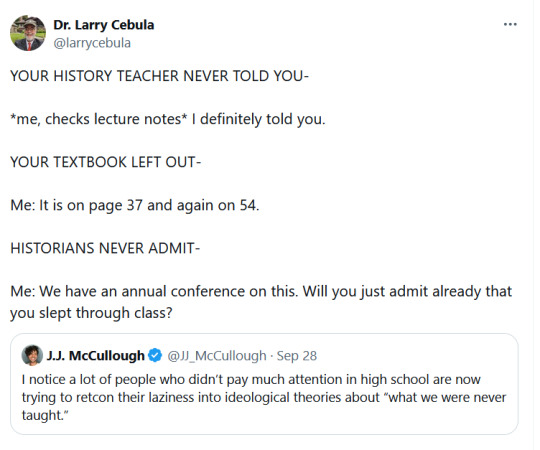
48K notes
·
View notes
Text
This is what misinformation + selective outrage + indifference looks like
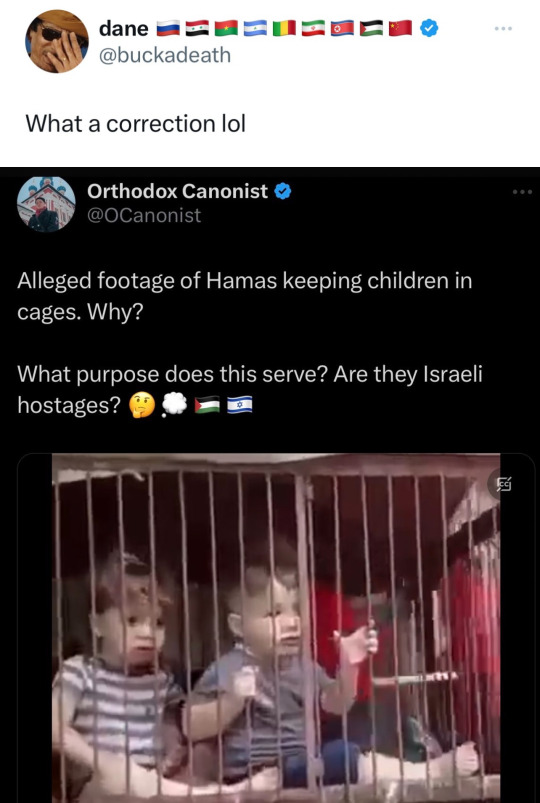
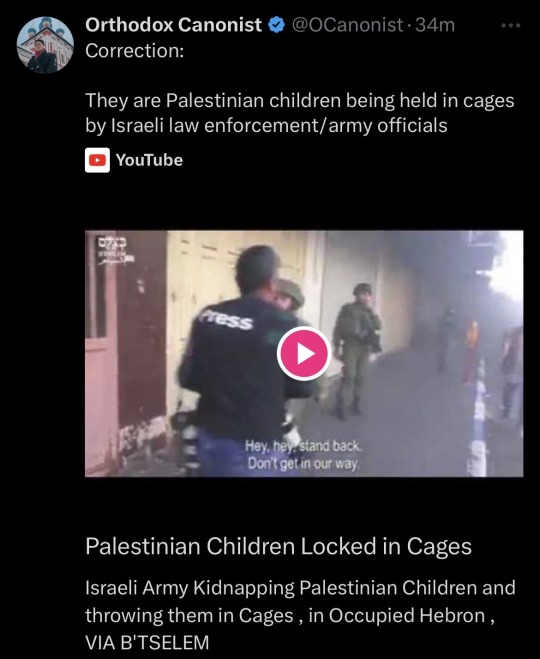
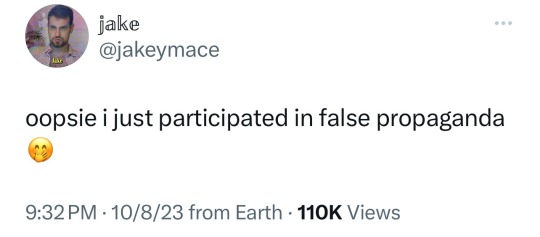
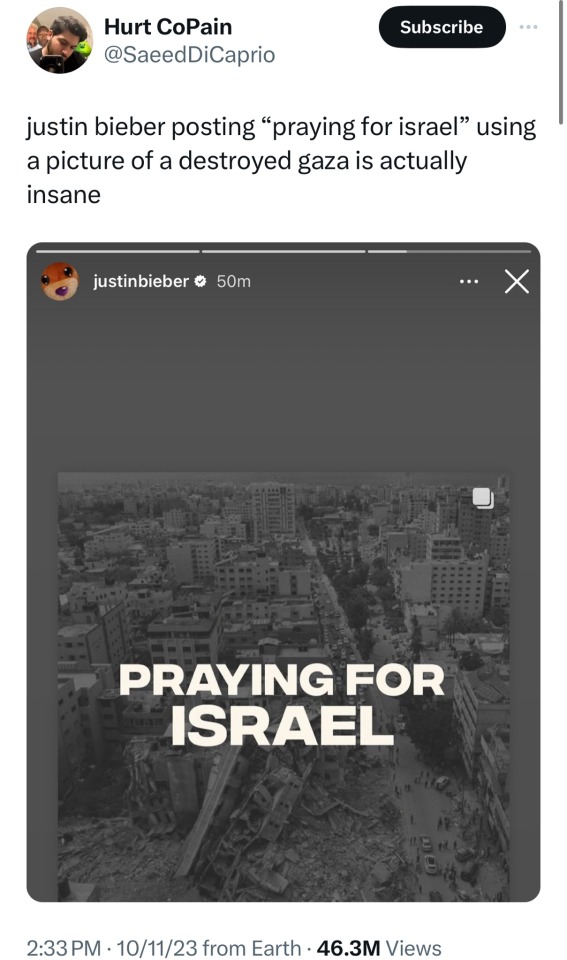
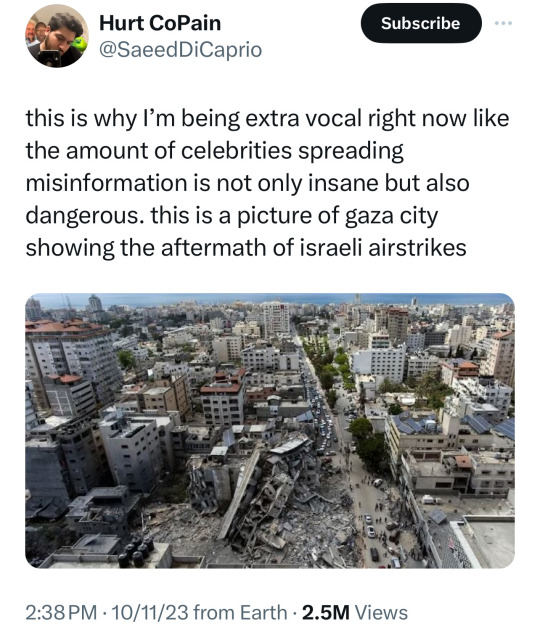
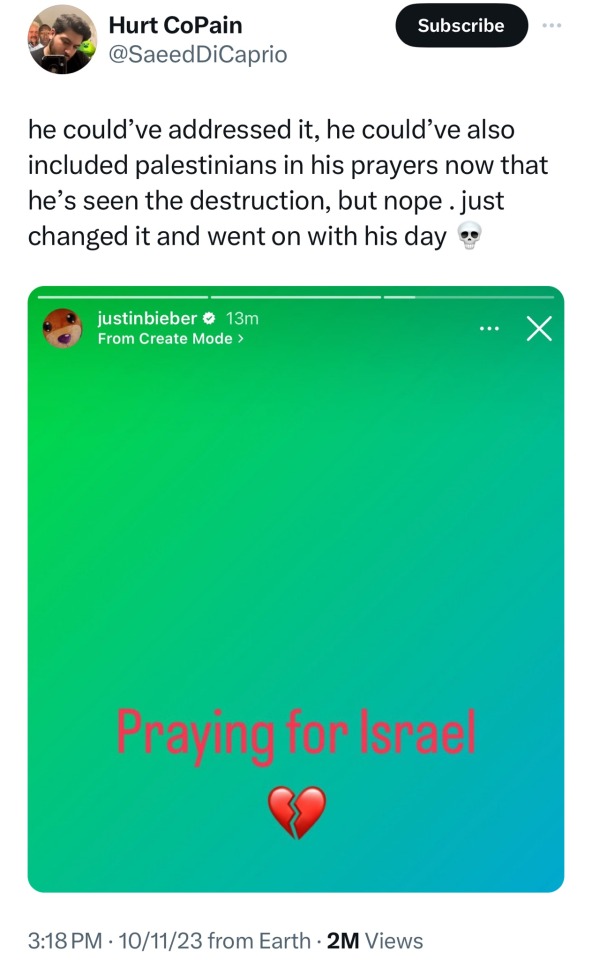
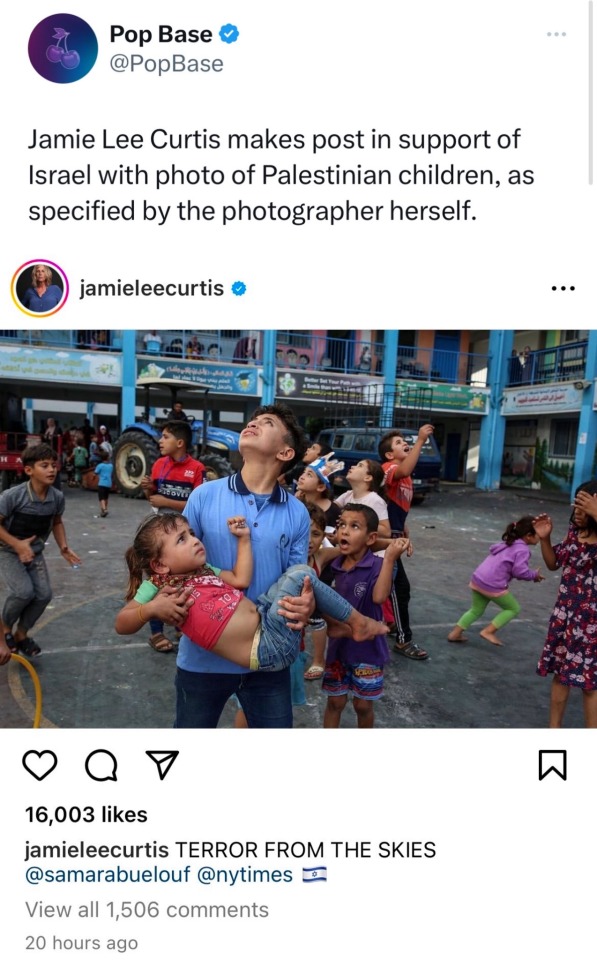
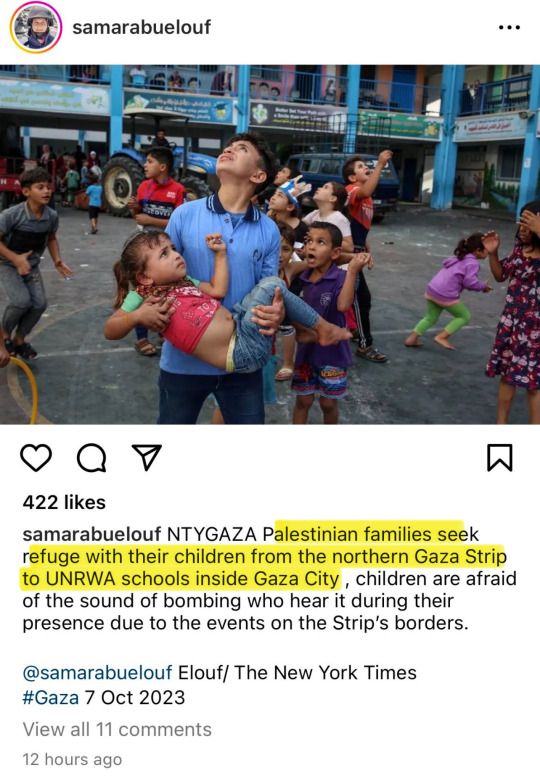
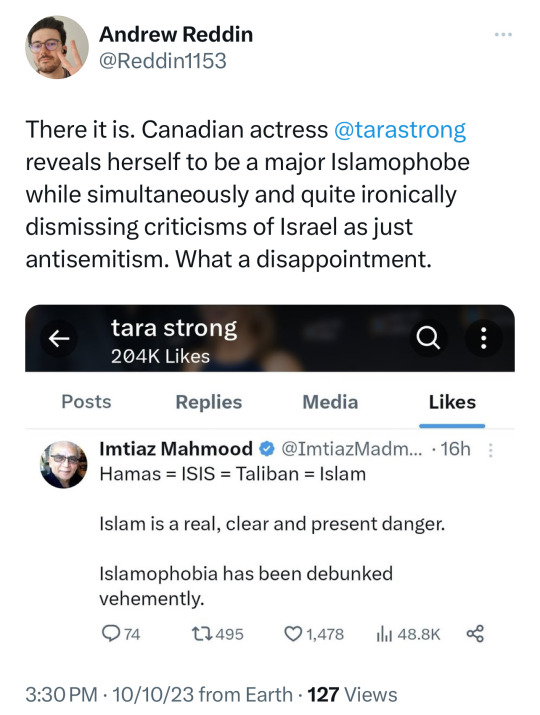
Me: Gotdammit
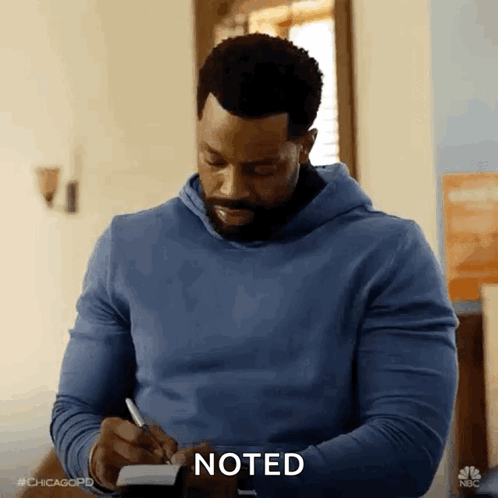
#politics#palestine#israel#tara strong#jamie lee curtis#justin bieber#gaza#hollywood#whitewashing history#misinformation#disinformation#selective outrage#🇵🇸
7K notes
·
View notes
Text

I want to add that the amount of people out there that didn't know that Black people were promised 40 acres and a mule after slavery was abolished is ASTOUNDING. 😒
#2025#found on bluesky#politics#black history#to the victor go the spoils#whitewashing history#rewriting history
417 notes
·
View notes
Text
exactly. asian families will never forget. my father has told me what the japanese did to my great-grandmother and what she witnessed. they killed, raped, beheaded, lynched, desecrated infants’ bodies, set up an internment camps, shot down local shipping boats so people would starve (she would buy sacks of rice that divers hauled in from the bottom of the bay and thoroughly rinsed it of seawater bc it was the only food available and rice is our staple food). my great-grandma lived to her 80s and kept her routine like it was still wartime. she cooked dinner in the afternoon at 3pm bc during the war, if any light shown, they’d get shot at or bombed. dinnertime was 7pm at the earliest and it was always cold.
sharing this meme again:


Criminal, op turned off reblogs
56K notes
·
View notes
Text
Imagine a group of evil vampires awakening an ancient powerful vampire of legend to help them dominate the land, but their plan backfires because said ancient powerful vampire of legend (that they assumed would look like them) is a minority the evil vampires are oppressing.
#vampires#kill bill#lucy liu#video#my video#my stuff#the evil vampires cheering as the ancient vampire rises from their coffin#but the cheers slowly die down when they notice the skin tone and hair texture and features are notttttt anywhere near theirs#everybody in the room realizing their vampire saviour was whitewashed by history jesus style
183 notes
·
View notes
Text
Question: How did Palestinian Arabs massacre Jews living in Hebron and Safed in 1517, 1834, and 1929, if Jews didn't arrive till 1948?
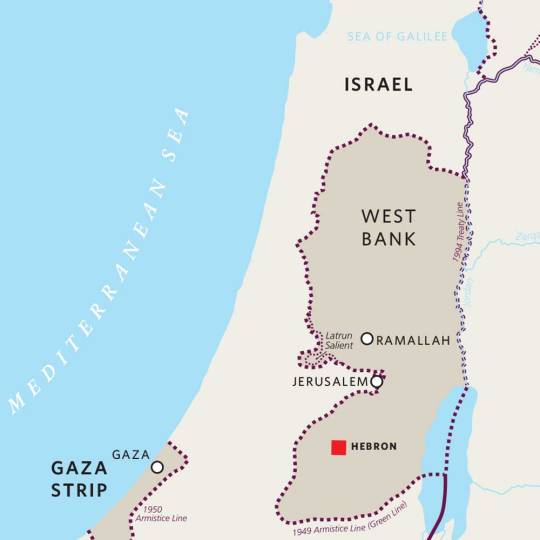
Also, Hebron is located in what we now call the West Bank.
How were Jews living in Hebron centuries before they first arrived to build "illegal settlements" after 1967?
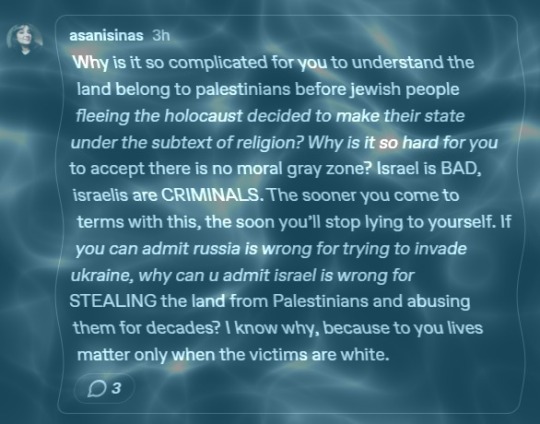

202 notes
·
View notes
Text
guys do you know how absolutely cracked the british!Grace siblings dynamic is... punk british Thalia who is so anti establishment bc look at the fucking monarchy and the british empire.... BLACK JASON GRACE, SON OF THE KING OF GODS, GRAPPLING WITH THE HISTORY OF THE ROMAN EMPIRE, THE BRITISH EMPIRE, AND THE EMPIRE OF THE UNITED STATES OF AMERICA. the implications... and yet they're just kids who want to fit in... the family story, yall, fucking ouch.
#black jason grace whose father was worshipped in the roman empire; and yet greek&roman history has been whitewashed to oblivion#black jason grace whose father is a king but who is acutely aware of how the mortal kings of these empires treated his ancestors#black jason grace who is haunted by how empires perpetuate themselves by manipulating citizens like himself#his intimate understanding of how new rome repeats the mistakes of the past will haunt me forever#but his hope in knowing that the roman empire had fallen once and the british and US american empires will lose strength one day...#I think thalia planted a seed or two there also. I love them#thalia grace#jason grace#tamara smart#pjo#percy jackson and the olympians#heroes of olympus
128 notes
·
View notes
Text
I wonder if the mural of Vander already existed and someone else painted Jinx into it after she became so well regarded?

I just feel like the portraits aren't that well integrated in theme. You have Vander's profile bordered in yellow flowers to represent friendship and joy. Then you have the more detailed painting of Jinx looming over Piltover exploding it with smoke bombs. Jinx is framed around doves while stylized into her latest attacks.
It feels like the artist(s) wanted to associate Jinx with Vander rather than the other way around because the actual subject of the Jinx's portion of the mural is Jinx violently provoking Piltover, but the nature of Jinx's portion is practically whitewashed to make it work with Vander's theme to the point Jinx is surrounded by DOVES. It might be an attempt to harmonize Jinx's persona with the ideals Vander left behind, which are the complete opposite of what Jinx is actually doing.
I think this is on purpose because Jinx is the most politically relevant member of her family now. Jinx is the one being valorized and venerated, and EVERYONE knows none of this would have been possible without Silco. Silco was the one who dedicated his resources to train Jinx and was openly anti-Piltovan to Jinx and the rest of Zaun.
I've seen some claims that Vander and Jinx are together because Vander was more beloved than Silco. But Silco never made it illegal to mourn or even celebrate Vander's memory. Silco allowed and a giant statue of Vander to be built in the middle if Zaun and he'd TALK to it.

But now Silco's dead and there are people running around in the background wearing Jinx's X and Silco's color scheme on their clothes. It feels like there's an ideological custody battle on behalf Silco and Vander through their supporters on who was Jinx's "true" father and gets the lions share of historical parental acclaim.
Tldr: The mural seems more like an effort to save face for Vander rather than bolster Jinx because Vander's actual values inexplicably lead his KNOWN favorite to becoming an enforcer. Meanwhile, everyone knows, especially Silco's supporters, that Silco's responsible for how Jinx turned out, and she's currently Zaun's favorite.
#arcane#arcane meta#jinx arcane#silco#vander arcane#i think the mural also whitewashes Vander's own history too#everyone goes on about the Hound of the Underground and he hangs cast irons still stained in blood#even foreign pirates know what he's done#vander was a violent man and in mamy ways still WAS a violent man bcuz he ran a protection racket on Zaun#he's only peaceful compared to the new guy who violently overthrew him and tried to murder all his children#and sure there were people who clearly tried to fight against Silco's regime#but it's very clear many people (not just the chembarons) benefited from Silco's leadership#and now vander supporters probably saw vi came back got excited then noticed she was running around w/ enforcers#a kiramman no less#so now they're thinking “oh god not only is vander dead but his favorite kid is an enforcer that everyone hates”#“and Silco's favorite is the one everyone loves”#time for some historical revisionism to save some face for vander in the afterlife
92 notes
·
View notes
Text
genuinely don't believe they will get that far, but if they do, i hope the kotlc moviemakers don't do the thing with tam and linh's hair. and maruca's
#kotlc#sigh#there's a history of poc tending to have their hair dyed on tv because just dark/black hair is too boring for the eyes or something#can we just. not do it. it doesn't even make sense. maybe instead they poured their melted registry pendant material into----#----one of their mom's sculpture creators (she's canonically a multi-medium artist) and wrecked it. then they still get the fuck you----#----AND they also get a cool sculpture thing they can bring along with them#this is also why i hate the all-elves-have-blue-eyes thing btw. in case that wasn't clear. it's unnecessary and adds nothing#except to whitewash the poc a bit#kotlc tam#tam song#kotlc linh#linh song#kotlc maruca#maruca chebota#mine
49 notes
·
View notes
Text
This is the first time I've clearly seen the actual revisions a state education department (Virginia) is making to a high school elective course on African American history (which focuses on that history in Virginia) because of a GOP governor's (i.e. Glenn Youngkin's) executive order prohibiting “inherently divisive concepts” from public schools.
This is a link to an archived article, so anyone can read the entire article. Below are some charts in the article that show the recommended revisions:

It is clear from the above chart that the reviewers want any mention of systemic racism and White privilege to be eliminated from the course, even though there is clear evidence that both exist.
It is also deeply concerning that any discussion of "implicit bias and stereotypes" is banned, even though those of us in the social sciences know that implicit bias and stereotyping exist. To prevent high school students from learning about these concepts is a blatant attempt to keep them ignorant.


Again, based on the chart above, the proposed revisions have done away with any discussion of the ubiquitous nature of racism or the fact that systemic racism exists. Instead the proposed revisions focus on (presumably overt) "discriminatory practices," while ignoring the subtle ways that racism has affected the Black population over the years, including the way it affected returning WWII Black veterans.
[See more under the cut.]
Furthermore, according to the proposed revisions, the term "White supremacist" cannot even be used. I wonder how the reviewers expect teachers to be able to describe the ideology of members of the KKK?
The reviewers also apparently want to pretend the University of Virginia wasn't involved with the Eugenics movement, since they took out a reference to it. In addition, the proposed revisions wouldn't allow the Eugenics movement to be called a "pseudo science." Are teachers supposed to claim it was "science"?
The reviewers also apparently want to forbid a discussion of how Eugenics was used in Virginia "to control African Americans," which indeed it reportedly was.
Furthermore, the recommended revisions falsely assume that redlining no longer exists, and that historical redlining no longer has an impact. Although it is not as overt as it once was, redlining does still exist in various forms and the impact of older redlining practices still have negative affects on Black populations.
From what I can tell, the proposed revisions have NOTHING to do with trying to stop students from feeling "uncomfortable" in classrooms. Discomfort naturally occurs for all of us when we learn about things that go against what we previously believed. But that is how people learn and grow.
And if the GOP wanted to stop "liberal" teachers from "indoctrinating" their students into "left-wing ideas," they would simply have legislated the presentation of two sides of an argument, AS LONG AS both sides were factually-based and rational. (For instance, there is NO factual or rational argument that the Holocaust didn't happen or wasn't as destructive as it was).
But the GOP politicians want to BAN the discussion of any view of history and society, however factually and rationally based, that goes against their whitewashed ideas of how history should be presented. In other words, the GOP wants schools to indoctrinate students into a right-wing way of viewing history and society that favors Whites.
This is incredibly regressive, and reminiscent of the United Daughters of the Confederacy's attempts to ensure "The Lost Cause" mythology was taught in schools.
#virginia#african american history course#whitewashing american history#glenn youngkin#republicans#the washington post
55 notes
·
View notes
Text
Please sign below👇
#happy thanksgiving#charlie brown#a charlie brown thanksgiving#thanksgiving#thanksgiving quotes#thankgiving#native representation#native history#texas#funk Texas#whitewashing#poll workers#not a poll#poll survey#poll winner#poll dancing#poll results#poll#music poll#poll time#indigenous american#holiday poll#tumblr polls#random polls#my polls#poll blog#polls#tournament poll#a poll a day#incognito polls
26 notes
·
View notes
Text


A humanitarian crisis is what happens after a natural disaster like a tsunami, or a hurricane, or an earthquake. A humanitarian crisis is when an unexpected accident happens. A humanitarian crisis is what happens to marginalized communities in a pandemic. Indiscriminately bombing a population of noncombatant civilians and then intentionally depriving them of food, water and medical access is a deliberate war crime, NOT some random act of nature. Words matter. Calling the aftermath of bombing civilians “a humanitarian crisis” is no different than using the passive voice to describe Israel’s war crimes without directly attributing them to Israel. Please do not let the well documented displacement, and the meticulously planned out ethnic cleansing and genocide of Palestinians… don’t allow that to be whitewashed and erased away into some kind of unfortunate “accident” of nature.
And don’t even get me started on the tired media trope of labeling non-white starving people, “looters” when they take food to feed their families…
#politics#euphemisms#whitewashing history#palestine#gaza#israel#whitewashing#hamas ≠ palestine#nakba#genocide#ethnic cleansing#bds#boycott divest sanction#settler colonialism#israel is an apartheid state#benjamin netanyahu is a war criminal#war crimes#humanitarian crisis#passive voice#framing matters
2K notes
·
View notes
Note
sanghis whining about "decolonization" while framing their entire identity on a colonial concept of 'hindu' honestly sums up their hypocrisy lmao
well that is the crux of it.
#and the thing is- they know it. they are aware of the compartmentalization#that has been caused which has led to the demise of the culture of several indegenous communities#sanghis ideal of their sanatan is based off on what the british ‘theorized’ about india’s religious history#but they cannot really even recognise it because if they do#they also have to recognise the fact that they are whitewashing a sub cultural religion which#has a history of centuries of oppression against non savarnas buddhists atheists#and also infighting shaivates and vaishnavites have been having for centuries- some long withstanding beef that is still there btw#asks#nonnie#sanghi bs
9 notes
·
View notes
Text

This is called obeying in advance, and it’s a key sign of a coming #autocracy and creeping #fascism… . Repost from @blackinformationnetwork • America’s top archivist, #ColleenShogan, is being accused of whitewashing and deemphasizing negative parts of U.S. history in a popular, national museum.
Shogan, the Biden appointee in charge of the nation’s most important documents, and her top advisors at the National Archives and Records Administration are facing heat over changes being made at its museum on the National Mall. Shogan has reportedly ordered the removal of references to Martin Luther King Jr., the incarceration of Japanese Americans during World War II, the government’s displacement of Indigenous tribes, union organizers, birth control, and more.
Visitors of the National Archives museum shouldn’t “feel confronted,” the archivist said, but rather “welcomed.” A “proposed exhibit exploring changes to the Constitution since 1787,” including “amendments abolishing slavery and expanding the right to vote,” was reduced in size, and employees were told that “focusing on the amendments portrayed the Founding Fathers in a negative light.”
@joyannreid
#whitewashing#black history#erasure#end white supremacy#blacklivesmatter#black lives matter#black excellence#black people#racial injustice
19 notes
·
View notes
Text
Will be saying this till I die that CREOLE DOES NOT MEAN BLACK/MIXED/NATIVE AND CAJUN DOES NOT MEAN YT ‼️‼️ Cajuns are a subset of Louisiana Creole (so all Cajuns are Creoles, not all Creoles are Cajuns. For the sake of this post though if I say “creoles” I mean non-Cajun Creoles) and the only difference between them is that Cajuns were typically dirt poor and lived in the bayou, while Creoles were typically wealthier and lived in the city and urban areas. There are black Cajuns, biracial Cajuns, and iirc nearly half of all Cajuns are native. There are also white Creoles. Cajun isn’t just “Creole but white” it’s a whole culture and community involving a lot of different ethnicities, and is very intertwined with southern indigenous cultures because of the proximity of the communities. The racial divide between Cajuns vs Creoles was caused by the sudden influx of white supremacy when Louisiana became U.S. territory- prior to that, black Creoles were legally considered white, and had all the privileges and power as a white person. (This is not to say it was some race-blind utopia, slavery was absolutely still a thing and in fact some wealthy Creoles owned slaves. Colorism was also a thing among Creoles. Your proximity to whiteness was largely dependant on your wealth and status.)
When the Louisiana purchase happened, American racism was then introduced to Creole and Cajun communities, and it tore through them really terribly. Subsequently, bc of a lot of shit, black/mixed people were categorized as Creoles, and so white people were categorized as Cajuns.
(This didn’t really stop the hatred of Cajuns and Cajun communities from white americans however, a mix of Cajuns being largely native and Cajuns being poor people who lived in the Bayou made them unpopular among “polite” white american society. Though it was harder to enforce any oppressive hate against them because the Cajuns were extremely isolated in the Bayou, tight knit, and had a reputation for being “dangerous” towards those who tried to come for them.)
#cajun#louisiana creole#indigenous history#cajun history#The common consensus among even some historians that “oh Cajuns are white Creoles aren’t” really kills me#Cajun history is indigenous history erasing that and whitewashing it is so shitty I hate when ppl do dat
45 notes
·
View notes